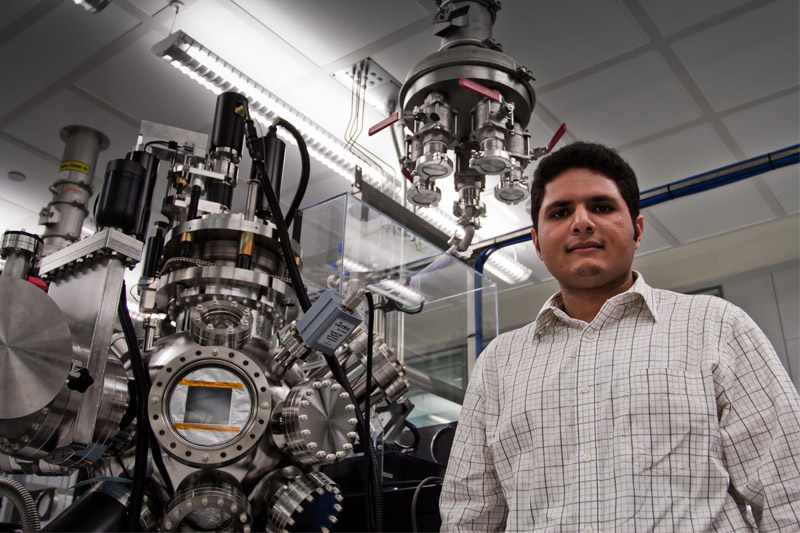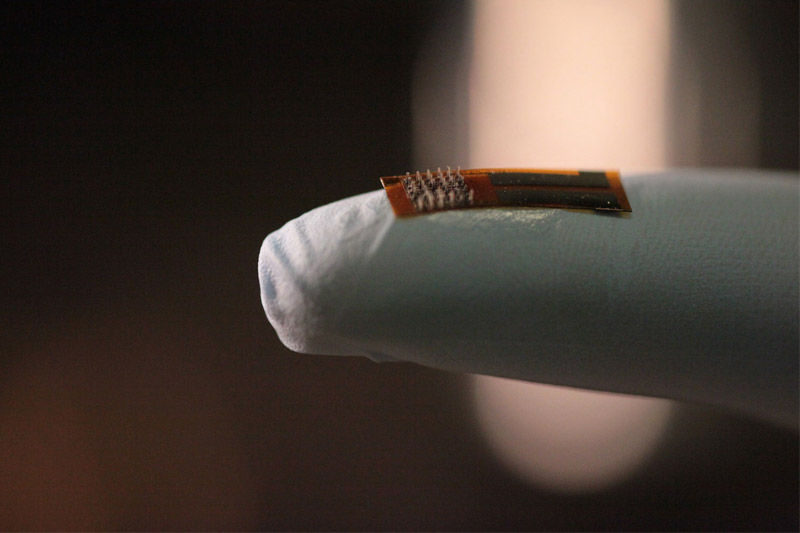An artificial skin that can feel

Ahmed Alfadhel wins IEEE best paper award
KAUST Ph.D. candidate Ahmed Alfadhel from the Sensing, Magnetism and Microsystems (SMM) research group in the Computer, Electrical and Mathematical Science and Engineering Division, won the best research paper award at the 2015 Institute of Electrical and Electronics Engineers (IEEE) Sensors Applications Symposium for his research on artificial skin.
Alfadhel’s innovative artificial skin design expands on his previous work examining artificial cilia flow sensors, which was published in the journal Lab on a Chip.
The skin design is based on a flexible magnetic nano-composite cilia surface, where a layer of magnetic cilia was fabricated over a magnetic field sensing element able to detect the slightest deflection of the cilia when exposed to an external force. The magnetic cilia and the sensing element were subsequently embedded in a polymeric surface, giving the device unprecedented flexibility.
"I started to investigate different solutions that nature developed for the sense of touch,” Alfadhel explained. “Animals like crickets and fish are provided with incredible mechanosensorial skins made of millions microscale hair-like cilia that allow them to sense the slightest vibration and touch – even something as imperceptible as the landing of a butterfly."

Alfadhel’s supervisor, KAUST Assistant Professor Jürgen Kosel, noted that “at present, much research is ongoing to develop artificial skins and touch sensors, but none of this research has managed to merge all the options that our device offers.”
Alfadhel’s work in the production of tactile sensors has applications in the production of cheaper and more versatile devices for health and environmental monitoring. His research allows for the production of a new generation of touch sensors, opening the door to low-cost technological applications.
“The outcomes of the project enable leading-edge technological applications for the development of a new range of cheap, disposable devices, such as portable sensors for patients and elderly people or robotic arms and prosthetics with haptic perception,” Alfadhel said.
-by Francesca Serra

